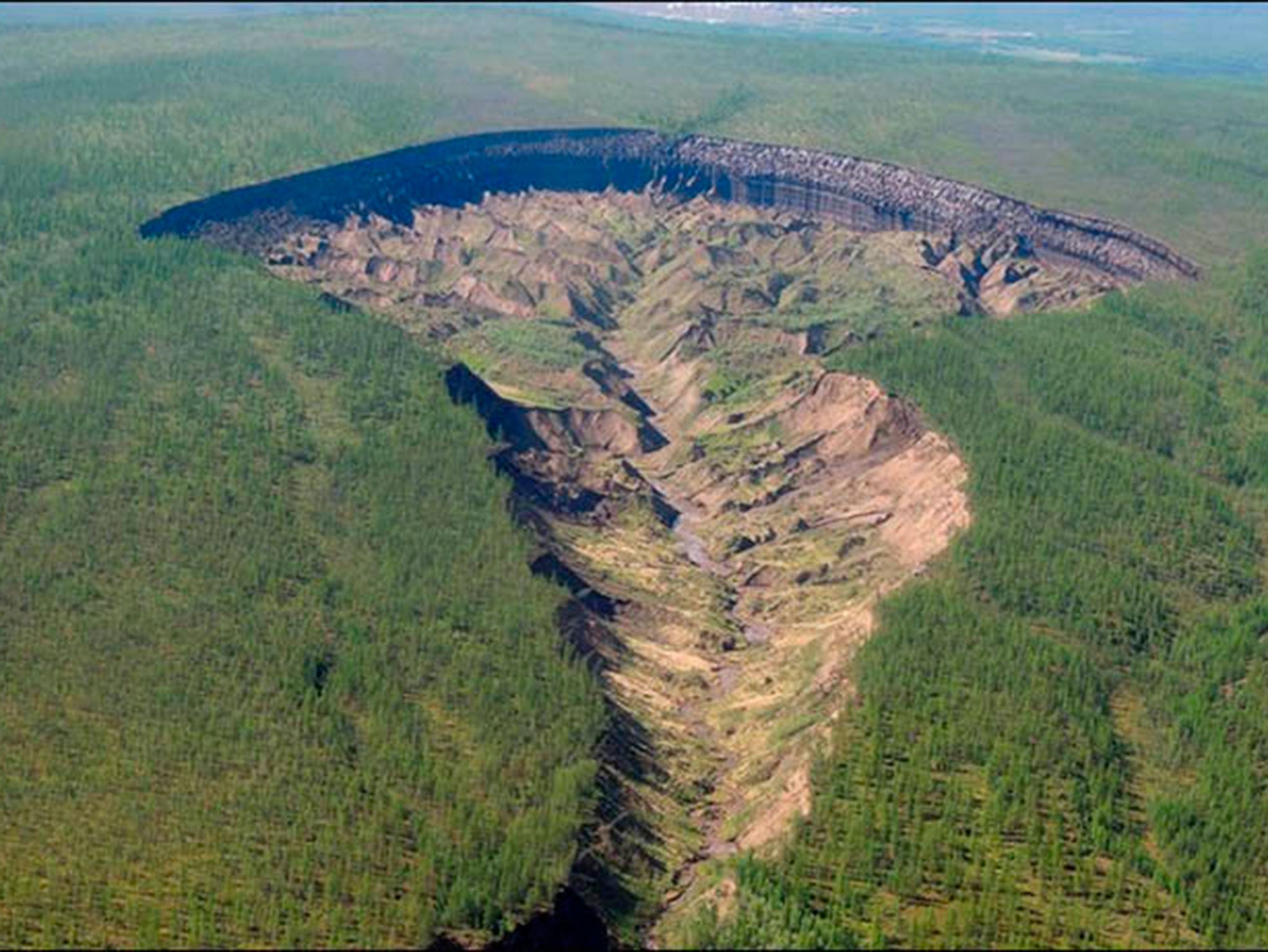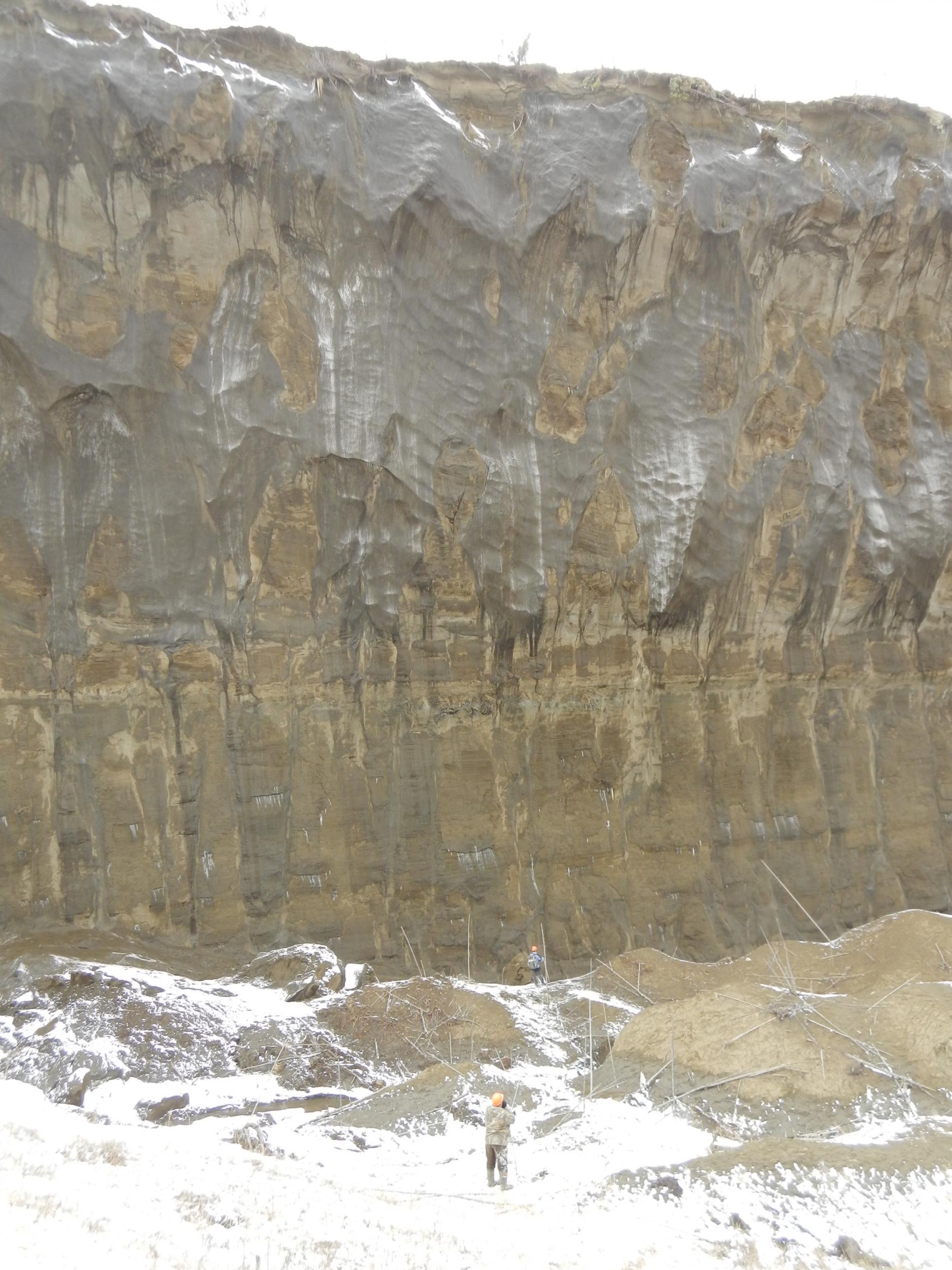Appearance of crater dubbed ‘the Gateway to the Underworld’ in Siberia is a warning to our warming planet
Such slumps have been ‘increasing in extent and intensity’ in the frozen north, scientists say

It is known as “the Gateway to the Underworld” by local people who fear to go near the massive crater that suddenly appeared in the frozen heart of Siberia.
And they are right to be afraid.
For as the permafrost melts, the world’s biggest “megaslump” is expanding rapidly. Already about a kilometre long and 90m deep, it is widening by up to 20m a year, making walking near its precipitous edges a dangerous pursuit.
But Batagaika crater, which first appeared about 25 years ago, is also a sign of the rate at which the world is warming – smaller ones have been appearing increasingly across the northern hemisphere.
The melting of the permafrost represents one of humanity’s greatest fears for it contains vast amounts of methane, a greenhouse gas much more potent than carbon dioxide.
If it were all to melt – a process that would start on an epic scale after about four degrees of warming – it would likely tip the planet into an extreme scenario the full horror of which is hard to describe.
Professor Julian Murton, a geologist at the University of Sussex, has just returned from a trip to the crater to study its cliffs, which provide a new source of geological information that potentially dates back some 200,000 years.
This includes the last time that the Earth was warmer than it is now, when hippopotamuses and elephants wandered around the future Trafalgar Square.

Professor Murton said: “In some sense, Batagaika does provide a view to what has happened in the past and what is likely to happen in the future.
“As the climate warms – I think there’s no shadow of a doubt it will warm – we will get increasing thaw of the permafrost and increasingly development of these ‘thermokarst’ features. There will be more slumps and more gullying, more erosion of the land surface.
“I think there’s growing evidence over the last few decades that thermokarst activity in the northern hemisphere has been increasing in extent and intensity.”
However, it will be sometime before Siberia begins to melt dramatically. It can still experience temperatures as low as minus -68C.

The Batagaika crater is thought to have begun after local people cut down some trees in the 1980s or early 1990s.
“Once you disturb the vegetation or soil above permafrost that can often set in train events that lead to the melting of ice within the permafrost,” he said.
“Cutting down of vegetation … removes some of the insulation that keeps the ground cool and that allows the summer heat to penetrate deeper into the ground.”
While the cliff edges are treacherous, the bottom of the crater is also something of a horror show.
Professor Murton compared it to the Badlands of the south-west US, full of ravines and gullies.
The remains of animals such as mammoths, musk ox and horses and ancient tree stumps can also be seen.
However, Professor Murton confirmed he had not found any sign of a mysterious tunnel leading to an underworld, physical or spiritual.
“At the bottom of the slump is rock … I haven’t seen any gateway to hell,” he said.
And while the permafrost can contain large amounts of methane, Professor Murton said there was “probably not a lot” in this particular area.
“You need waterlogged conditions for generating methane. It is pretty wet in the bottom of the slump, so it’s possible there’s some methane coming out of there,” he said.
But the crater, he said, was dangerous to people in the area simply “because this thing is growing remarkably quickly”.
“If you’ve got roads or paths nearby, they could easily get consumed as this thing grows … so it poses a hazard to the locals,” he said.
“There’s a lot of underground ice, ice wedges that are 20 to 30 metres high. Once this starts thawing there will be rapid change.”
Join our commenting forum
Join thought-provoking conversations, follow other Independent readers and see their replies
Comments